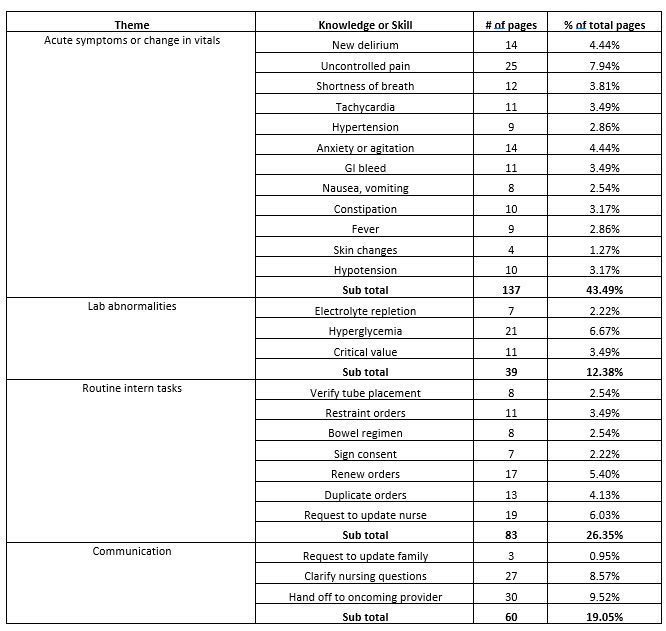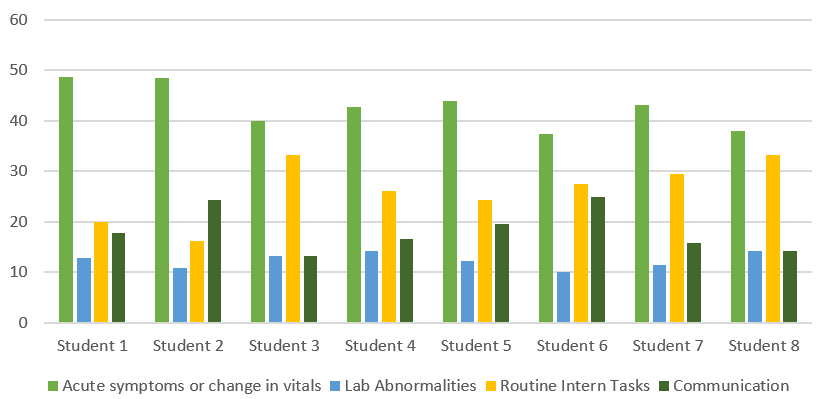Background: Cross cover as a new intern can be daunting. A 2019 survey of interns across medical specialties showed the majority had no formal cross cover training or experience and felt unprepared to serve in this role. (1) Residencies have been increasing night float experiences and cross cover roles with careful attention to assure duty hour compliance. (2, 3) Intern boot camps and cross cover simulations have been implemented to improve preparedness. (4) While these simulations provide some exposure to common cross cover issues, they do not provide real experience with actual hospitalized patients, or direct clinical teaching. Hospitalists are uniquely qualified to teach trainees in a cross cover setting. In 2020, a hospitalist service sub-internship was developed at our institution pairing a hospitalist with sub-interns (sub-Is) to offer one-on-one time with an attending. As part of that elective, 1 of 4 weeks was intentionally devoted to night cross cover and admissions. During the night block, each sub-intern (sub-I) admitted two patients and cross covered up to 16 patients for 4-5 nights with attending supervision. On nights, sub-Is may cross cover or admit patients including general medicine, cardiology, lung and renal transplant, hepatology, and oncology patients. By reviewing the pages received by the students during their cross cover time, we can ensure that they are gaining experience and exposure to the most important components of being a cross covering intern.
Purpose: The purpose of evaluating paging data from our cross cover elective is to ensure the students have a comprehensive exposure to needs that arise overnight. We conducted a retrospective review of the pages received by our rotating sub-Is from May-October 2022. Through this review, we were able to tabulate pages into broad categories including: acute symptoms, changes in vital signs, lab abnormalities, routine intern tasks, and types of communication. Routine intern tasks were identified as: order renewals, restraint orders, obtaining consent, tube and line placement verification, and orders for routine as needed medications. In this way, we were able to assess the variety and acuity of pages received.
Description: 8 students participated in the hospital medicine sub-I over the past year, each covering 4-5 nights during their block. Pages are automatically compiled within the hospital’s paging database through virtual pagers used for rotating shift coverage. A total of 315 pages were received, with an average of 39.5 pages per sub-I and 9.2 pages per night. The largest category of pages received were pages representative of acute symptoms or vital sign changes, accounting for 43% of pages. The second most common category was pages for routine intern tasks at 26%, followed by communication at 19% and lab related abnormalities at 12%. 4/8 students were paged to evaluate critically ill patients in the form of a rapid response.
Conclusions: Sub-Is were exposed to many situations typical of hospital medicine cross cover. Most pages were in reference to an acute symptom which required critical thinking and medical decision making in a supervised setting. This represents a strong exposure to the role an intern has overnight and provides real-world experience to prepare medical students for a major role of their intern year and beyond. Our next steps are to assess student sentiment of preparedness for cross-cover as an intern by surveying the sub-Is from this and the general medicine rotation.


